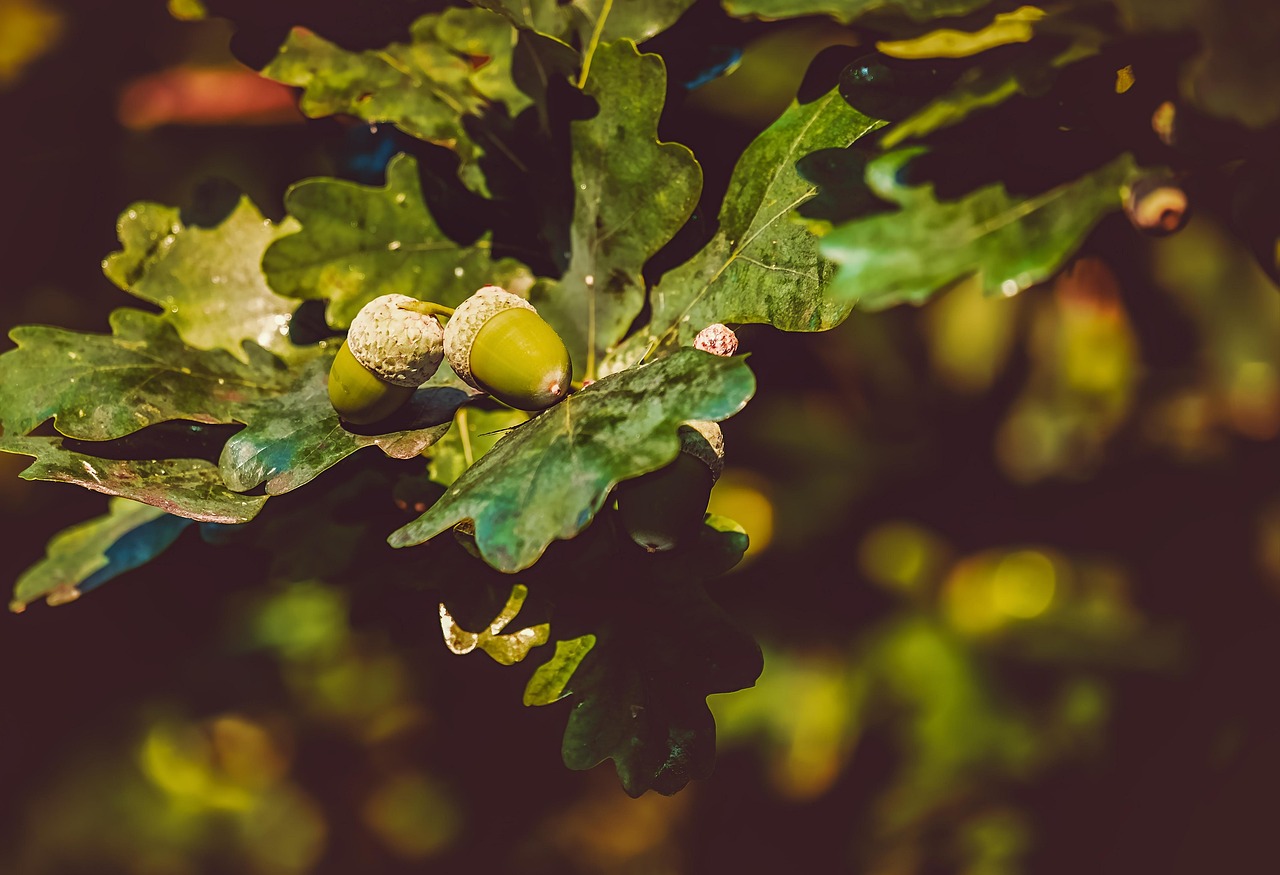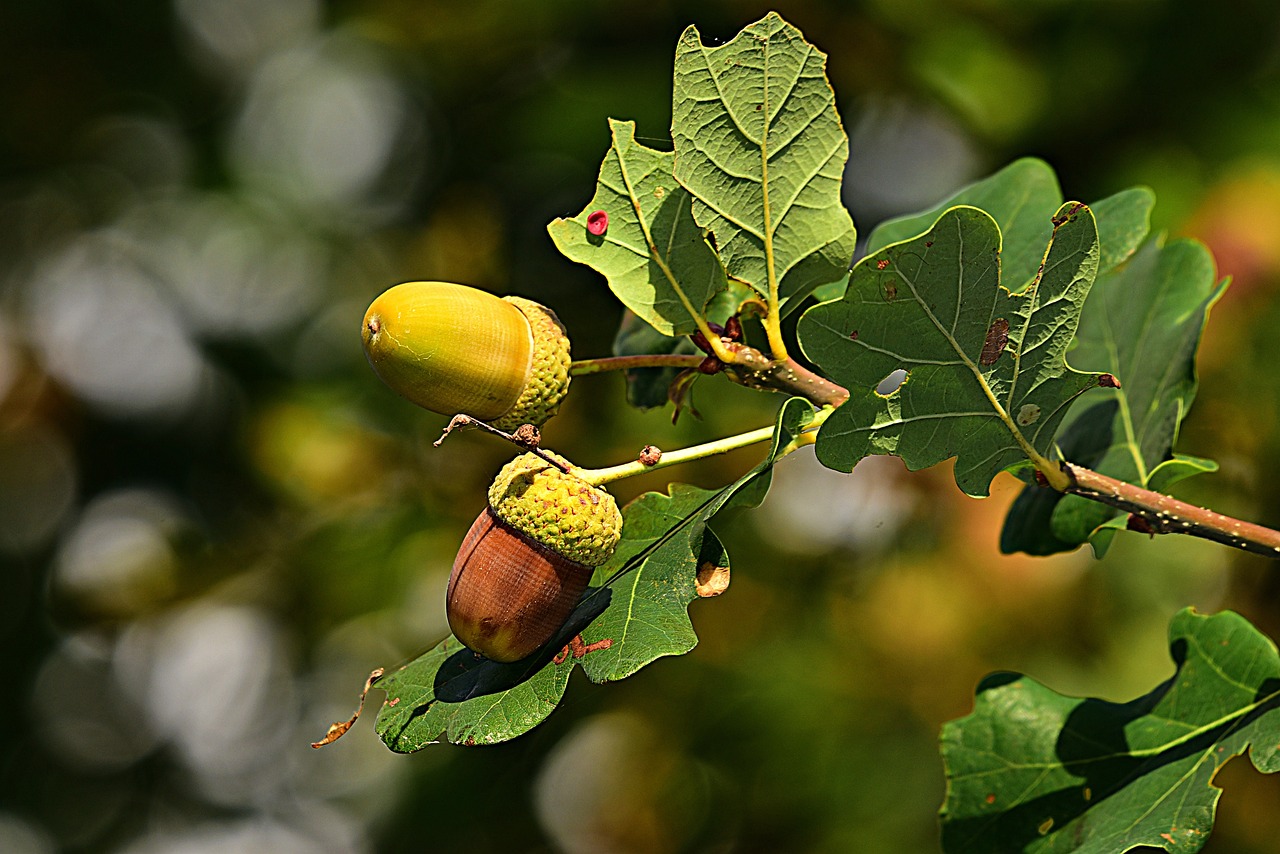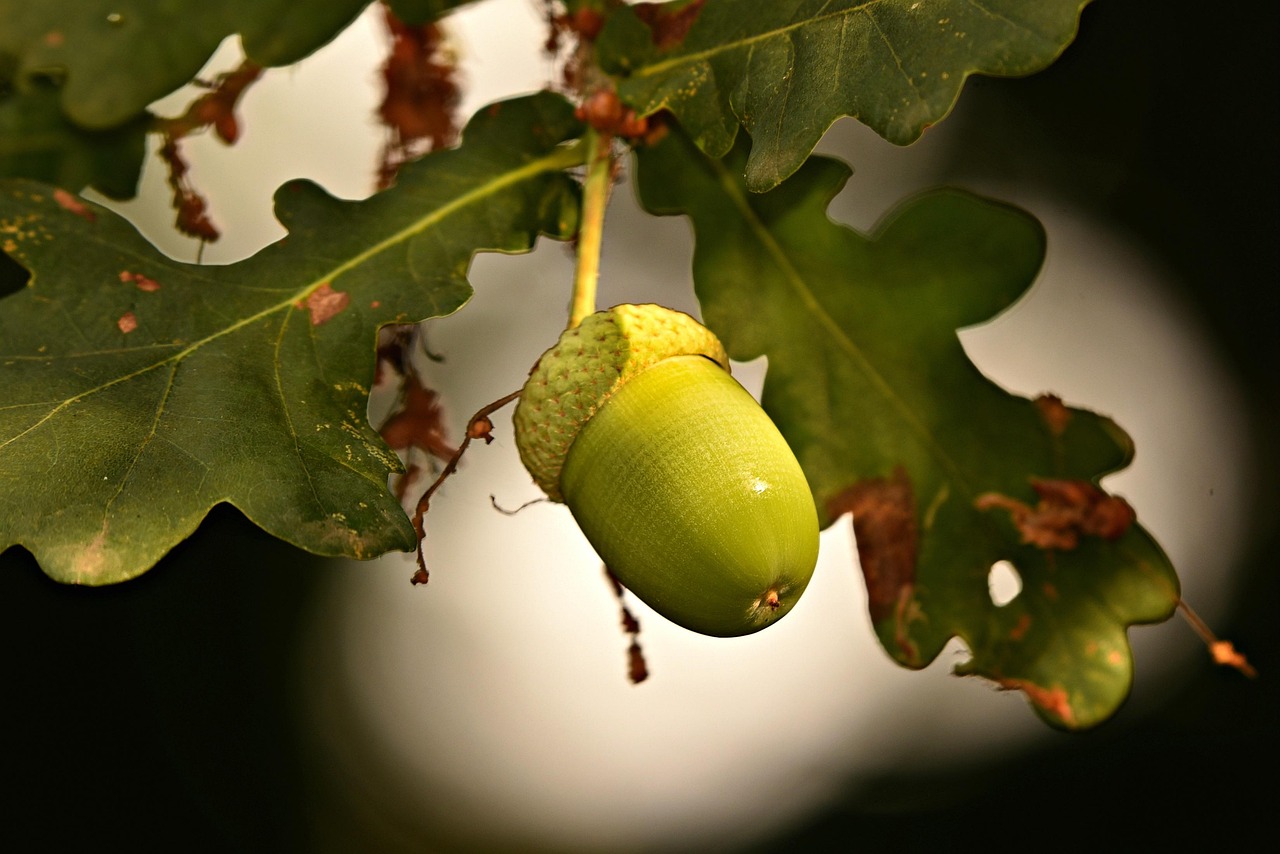Many animals eat oak trees, including insects, mammals, and birds. Common tree feeders are caterpillars, beetles, squirrels, and deer. These animals consume various parts of oak trees, such as leaves, acorns, and bark, impacting the tree’s health and ecosystem.
Oak trees are vital components of many ecosystems. They provide shelter and food for numerous species. Known for their strength and longevity, oaks can live for hundreds of years. However, they are not just majestic giants; they also serve as a food source for a variety of animals. Understanding which animals rely on oak trees can help us appreciate their ecological role and the intricate relationships within forest environments.
Oaks produce acorns, which are a significant food source for many wildlife species. Acorns are rich in nutrients and serve as an essential energy source during the fall and winter months. Additionally, the leaves and bark of oak trees are consumed by various herbivores. These interactions illustrate the importance of oak trees in maintaining biodiversity.
Common Animals That Feed on Oak Trees

Here is a comprehensive list of animals that are known to feed on different parts of oak trees:
| Animal | Type of Feeding |
|---|---|
| Squirrels | Acorns, buds, and bark |
| Deer | Leaves and young shoots |
| Woodpeckers | Bark and insects beneath |
| Caterpillars | Leaves |
| Beetles | Leaves and bark |
| Rabbits | Bark and young shoots |
| Mice | Acorns and seeds |
These animals play a crucial role in the health of oak forests. For instance, squirrels not only consume acorns but also help in seed dispersal. When they bury acorns for later consumption, some are forgotten and can sprout into new oak trees. This behavior is vital for the regeneration of oak populations.
The consumption of oak leaves and bark by herbivores like deer and rabbits can impact tree growth. While some feeding is natural and part of the ecosystem’s balance, overpopulation of these animals can lead to significant damage to young oak trees. Such interactions highlight the delicate balance between wildlife and plant life in forest ecosystems.
In addition to herbivores, many insects also rely on oak trees for sustenance. These insects can be both beneficial and detrimental to the health of oak trees. For instance, while some caterpillars act as food sources for birds and other predators, they can also strip leaves from trees if present in large numbers. The presence of these insects often serves as an indicator of the overall health of the forest ecosystem.
As we explore more about these fascinating interactions between animals and oak trees, it becomes clear how crucial these trees are to sustaining wildlife populations. Their role extends beyond mere beauty in landscapes to being a cornerstone of forest ecology.
The Role of Oak Trees in Animal Diets
Oak trees not only provide food but also create habitats for many species. The diverse parts of the oak tree serve different dietary needs for various animals. Each animal has adapted to utilize specific parts of the oak, showcasing the tree’s multifaceted role in the ecosystem.
Acorns: A Nutritional Powerhouse
Acorns are one of the most significant food sources derived from oak trees. They are a seasonal delicacy for many animals, especially during the fall. The nutritional value of acorns makes them a vital part of the diets of numerous wildlife species. Here are some key points about acorns:
- Rich in Calories: Acorns contain essential fats, carbohydrates, and proteins, making them energy-dense.
- Seasonal Availability: Acorns typically fall from oak trees in late summer and early autumn, coinciding with the preparation of many animals for winter.
- Diverse Consumers: Many animals, including squirrels, deer, and various bird species, rely heavily on acorns for sustenance.
Different species of oaks produce acorns of varying sizes and flavors. Some animals, like squirrels, prefer sweeter acorns, while others might consume any available type. This diversity helps ensure that various animals can survive in different habitats and conditions.
Leaves and Foliage: A Source of Greenery
The leaves of oak trees are essential food sources for many herbivores. Various insects and mammals feast on the foliage during the growing season. Here are some noteworthy aspects regarding oak leaves:
- Caterpillar Species: Many caterpillars, including those of moths and butterflies, thrive on oak leaves, playing a crucial role in the food chain.
- Deer and Rabbits: These mammals often graze on young oak leaves and shoots, particularly during spring when new growth appears.
- Insect Herbivory: Insects such as leaf beetles can consume large quantities of oak leaves, which can affect tree health.
While leaf consumption is part of natural herbivory, excessive feeding by large populations can lead to stress on oak trees. This stress might reduce the tree’s growth and overall health, highlighting the need for balanced ecosystems.
Birds and Their Relationship with Oak Trees
Birds play an essential role in the ecosystem surrounding oak trees. Many bird species benefit from oak trees in various ways:
- Nesting Habitats: The sturdy branches of oak trees provide excellent nesting sites for many birds.
- Food Sources: Birds such as blue jays and woodpeckers feed on acorns and insects found on or under the bark.
- Seed Dispersal: Some birds help disperse acorn seeds away from the parent tree, promoting growth in new areas.
This relationship between birds and oak trees is vital for maintaining healthy forest ecosystems. Birds contribute to pollination and seed dispersal while benefiting from the resources provided by the trees.
Impact of Insects on Oak Trees
Insects are both allies and adversaries to oak trees. While many insects are crucial for pollination and serve as food sources for other animals, some can cause significant harm to the trees:
- Beneficial Insects: Pollinators and those that aid in decomposition help maintain ecosystem health.
- Pests: Certain insects, such as gypsy moths and oak borers, can cause considerable damage by feeding on leaves or boring into the wood.
- Indicator Species: The presence of specific insects can indicate the overall health of an oak forest ecosystem.
The balance between beneficial and harmful insect populations is crucial for the sustainability of oak trees. Effective management strategies are necessary to protect these valuable trees from invasive pests while maintaining their role in supporting wildlife.

How Animals Impact Oak Tree Health
The relationship between oak trees and the animals that feed on them is complex. While many animals rely on oaks for food, their feeding habits can significantly affect the health and growth of these trees. Understanding these interactions is essential for managing oak forests and preserving biodiversity.
Herbivory and Its Effects on Oak Trees
Herbivory, the consumption of plant material by animals, can have both positive and negative effects on oak trees. While some level of herbivory is a natural part of forest ecosystems, excessive feeding can lead to detrimental consequences. Here are some key points about herbivory on oak trees:
- Leaf Consumption: When animals like caterpillars and beetles consume oak leaves, it can lead to reduced photosynthesis. This reduction affects the tree’s ability to produce energy.
- Bark Damage: Animals such as deer and squirrels may strip bark from young trees. Bark stripping can expose trees to pathogens and pests, increasing their vulnerability.
- Growth Stimulation: Interestingly, moderate herbivory can stimulate growth in some cases. When trees lose leaves, they may produce new shoots, encouraging increased foliage density.
Understanding these dynamics helps forest managers maintain healthy oak populations while balancing wildlife needs. Monitoring animal populations and their feeding habits is crucial for effective forest management.
Animal Adaptations to Oak Trees

Many animals have developed unique adaptations to take advantage of oak trees. These adaptations allow them to efficiently consume different parts of the tree while minimizing competition with other species.
Specialized Feeding Strategies
Different animals utilize specialized feeding strategies to extract food from oak trees:
- Squirrels: These agile creatures have strong teeth capable of cracking open acorns. They also have excellent memories, allowing them to locate buried acorns later during winter.
- Caterpillars: Many species have evolved to blend in with oak leaves, providing camouflage from predators while they feed on foliage.
- Woodpeckers: These birds possess strong beaks that allow them to peck through bark to find insects hidden beneath the surface. Their ability to excavate holes helps control insect populations.
These specific adaptations illustrate the intricate relationships between animals and oak trees. Each species plays a distinct role in the ecosystem, showcasing the importance of biodiversity in forest health.
Mutualistic Relationships
Some animals form mutualistic relationships with oak trees, benefiting both parties involved. In these interactions, each species provides something valuable to the other.
- Birds and Insects: Many birds feed on insects found on oak trees, helping control pest populations. This protection allows the trees to thrive.
- Squirrels and Acorns: While squirrels consume acorns, they also act as seed dispersers. When they bury acorns for later consumption, some go unclaimed and can grow into new oak trees.
- Pollinators: Insects like bees and butterflies are attracted to the flowers of oak trees. Their pollination efforts contribute to the reproduction of oak species.
These mutualistic relationships emphasize the interconnectedness of species within an ecosystem. They highlight how the health of one species can directly impact others, reinforcing the importance of maintaining healthy oak forests.
The Role of Oak Trees in Ecosystem Services
Oak trees provide numerous ecosystem services beyond just supporting wildlife. They play vital roles in maintaining ecological balance and supporting human communities.
Ecosystem Services Provided by Oak Trees
The following are some essential services provided by oak trees:
- Carbon Sequestration: Oak trees absorb carbon dioxide from the atmosphere, helping mitigate climate change.
- Soil Stabilization: The extensive root systems of oak trees help prevent soil erosion, maintaining soil health and structure.
- Water Regulation: Oak forests play a crucial role in regulating water cycles by absorbing rainfall and reducing runoff.
These services benefit not only wildlife but also human populations. Healthy oak ecosystems contribute to cleaner air and water, making them invaluable resources for all living beings.
The Importance of Oak Trees in Biodiversity

Oak trees are often referred to as “keystone species” due to their significant role in supporting biodiversity. Their ability to provide food and habitat for numerous organisms makes them vital components of forest ecosystems.
Research has shown that oak trees support more species of Lepidoptera (butterflies and moths) than any other tree genus in North America. This diversity not only supports the insects themselves but also the birds and other wildlife that depend on these insects as a food source.
Supporting a Diverse Ecosystem
The interactions between oak trees and the animals that feed on them foster a rich tapestry of life. The following points emphasize the importance of oak trees in maintaining ecological diversity:
- Habitat Creation: Oak trees offer essential habitats for various wildlife, including mammals, birds, insects, and fungi. This variety enhances ecosystem resilience.
- Food Web Dynamics: The complex relationships formed between oak trees and the animals that consume them contribute to intricate food webs. These dynamics are crucial for ecosystem stability.
- Genetic Diversity: The diverse species living in and around oak trees promote genetic diversity, which is vital for adapting to environmental changes and challenges.
As we explore the significance of oak trees, it is evident that their preservation is essential for maintaining biodiversity. Protecting oak forests helps sustain the myriad species that depend on them for survival.
Conservation Efforts for Oak Ecosystems
Given the critical role oak trees play in ecosystems, conservation efforts are essential. Various strategies can help protect these trees and the wildlife they support:
- Sustainable Forestry Practices: Implementing responsible logging practices ensures that oak populations remain healthy while providing resources.
- Restoration Projects: Replanting initiatives can restore degraded oak habitats, helping to reinstate ecological balance.
- Invasive Species Management: Controlling invasive species that threaten oak trees and their ecosystems is vital for protecting these habitats.
Community involvement is crucial in these conservation efforts. Educating the public about the importance of oak trees can lead to greater appreciation and proactive measures to protect them. Local initiatives, such as tree planting events and educational programs in schools, can significantly impact public awareness.
Final Thoughts
Oak trees are more than just towering giants in our forests. They serve as vital resources for many animal species, contributing to the health and stability of entire ecosystems. The interactions between animals and oak trees demonstrate the intricate web of life that sustains biodiversity.
By understanding the importance of these relationships, we can make informed choices about land management and conservation efforts. Protecting oak trees not only ensures the survival of numerous wildlife species but also enhances the overall health of our environment. As stewards of the planet, it is our responsibility to advocate for the preservation of these magnificent trees and the diverse ecosystems they support.
The significance of oak trees extends beyond their immediate surroundings. They play a crucial role in combating climate change, supporting wildlife, and maintaining ecological balance. As we continue to study and understand how animals interact with oak trees, we must commit to protecting these invaluable resources for future generations.
